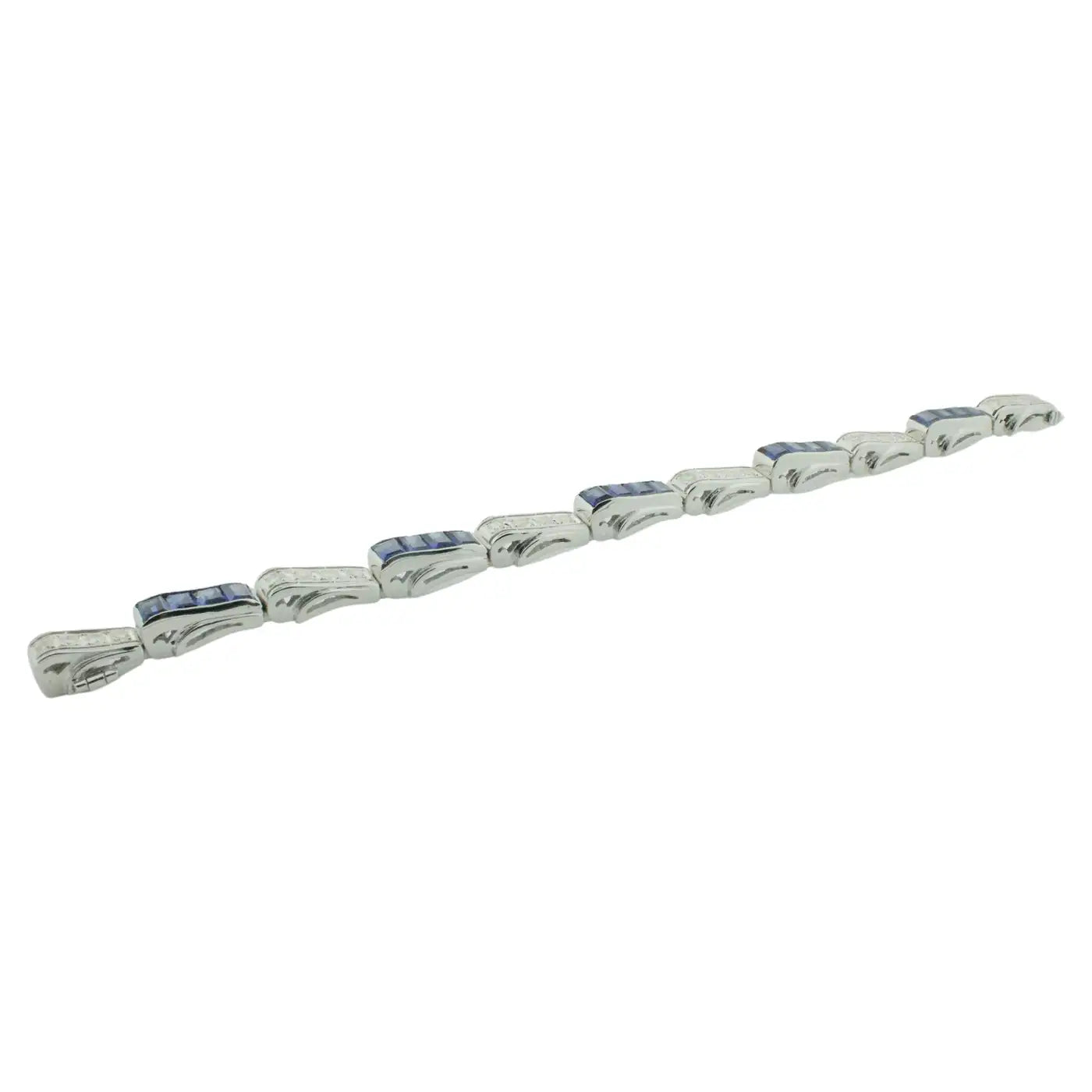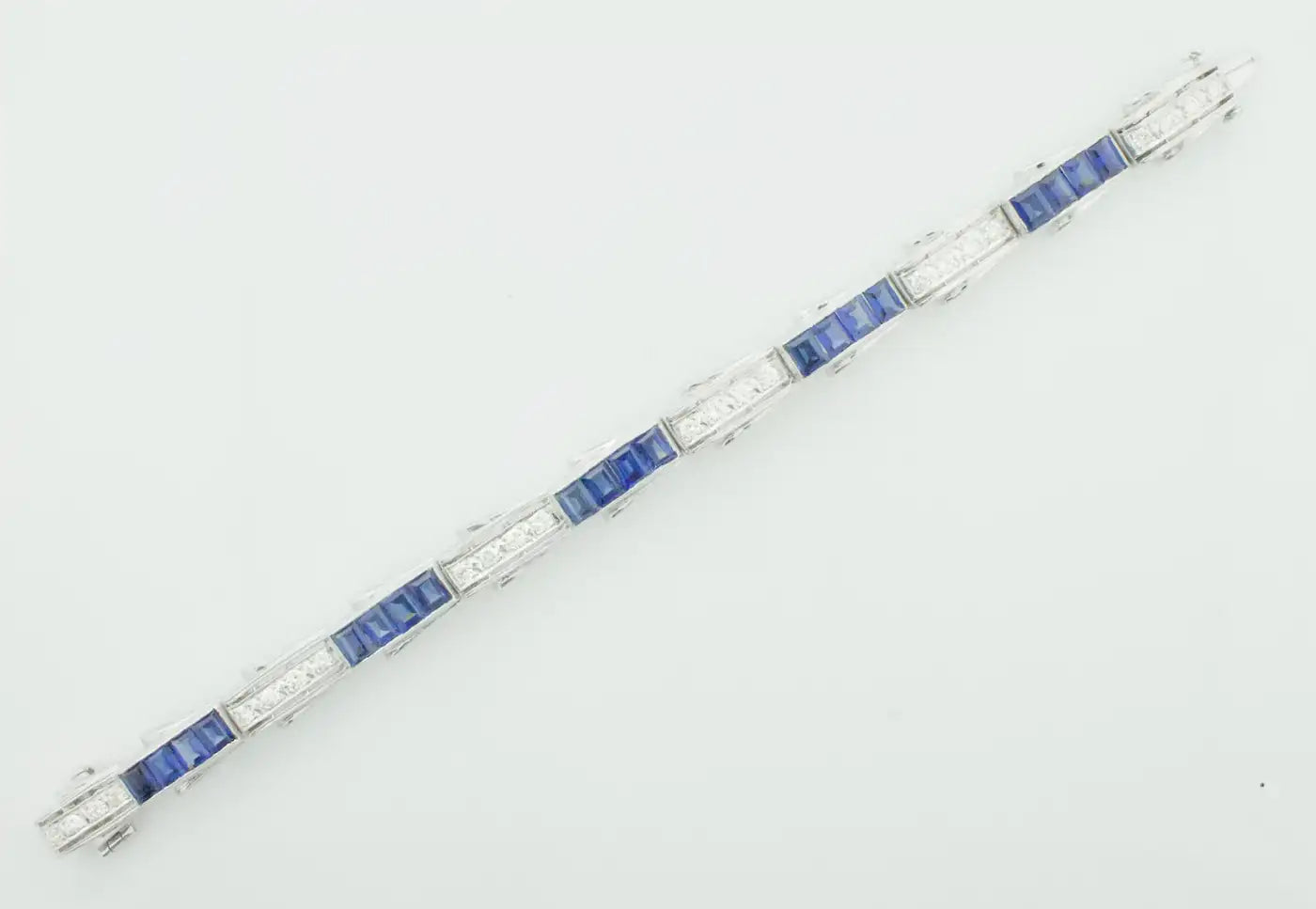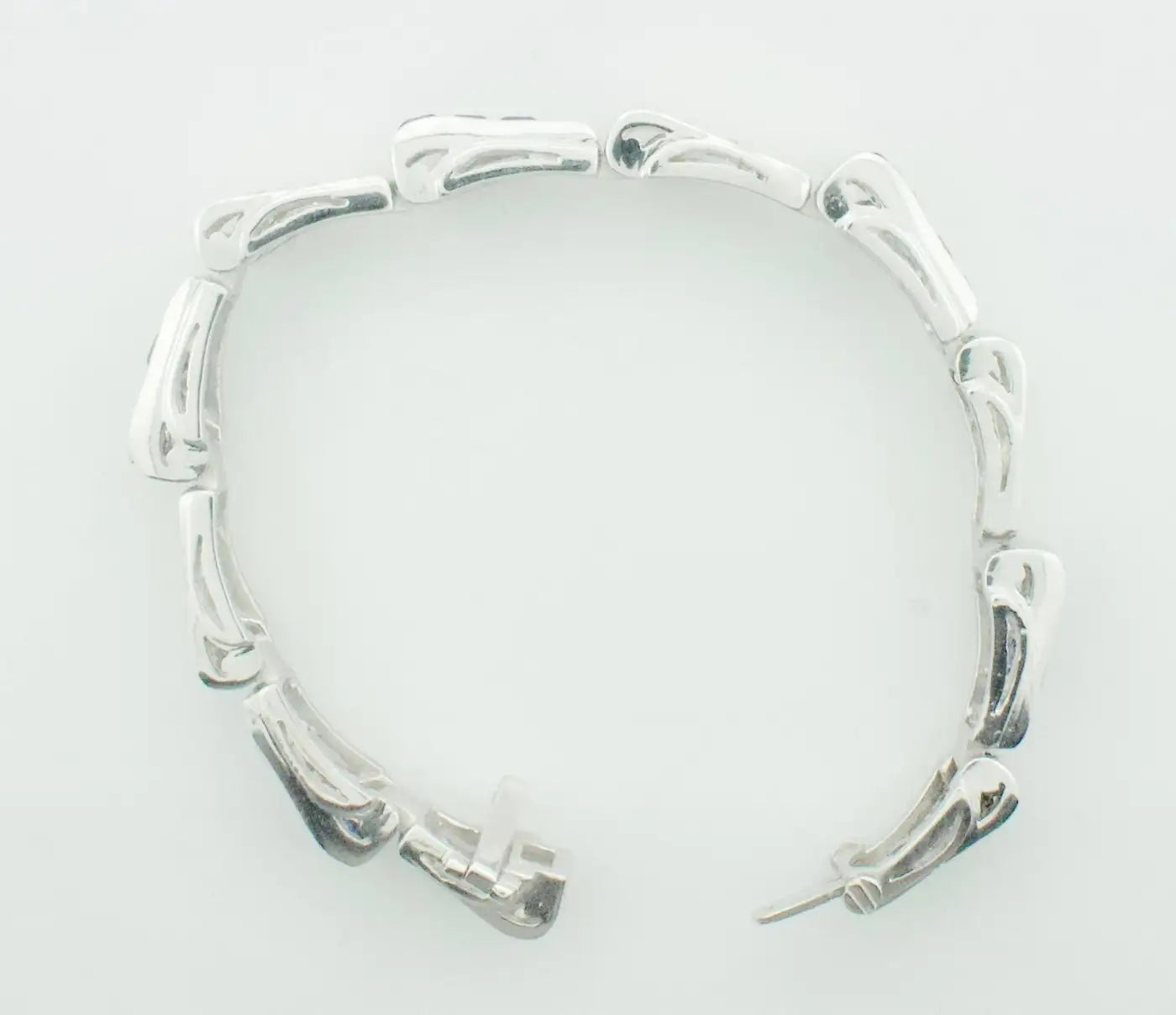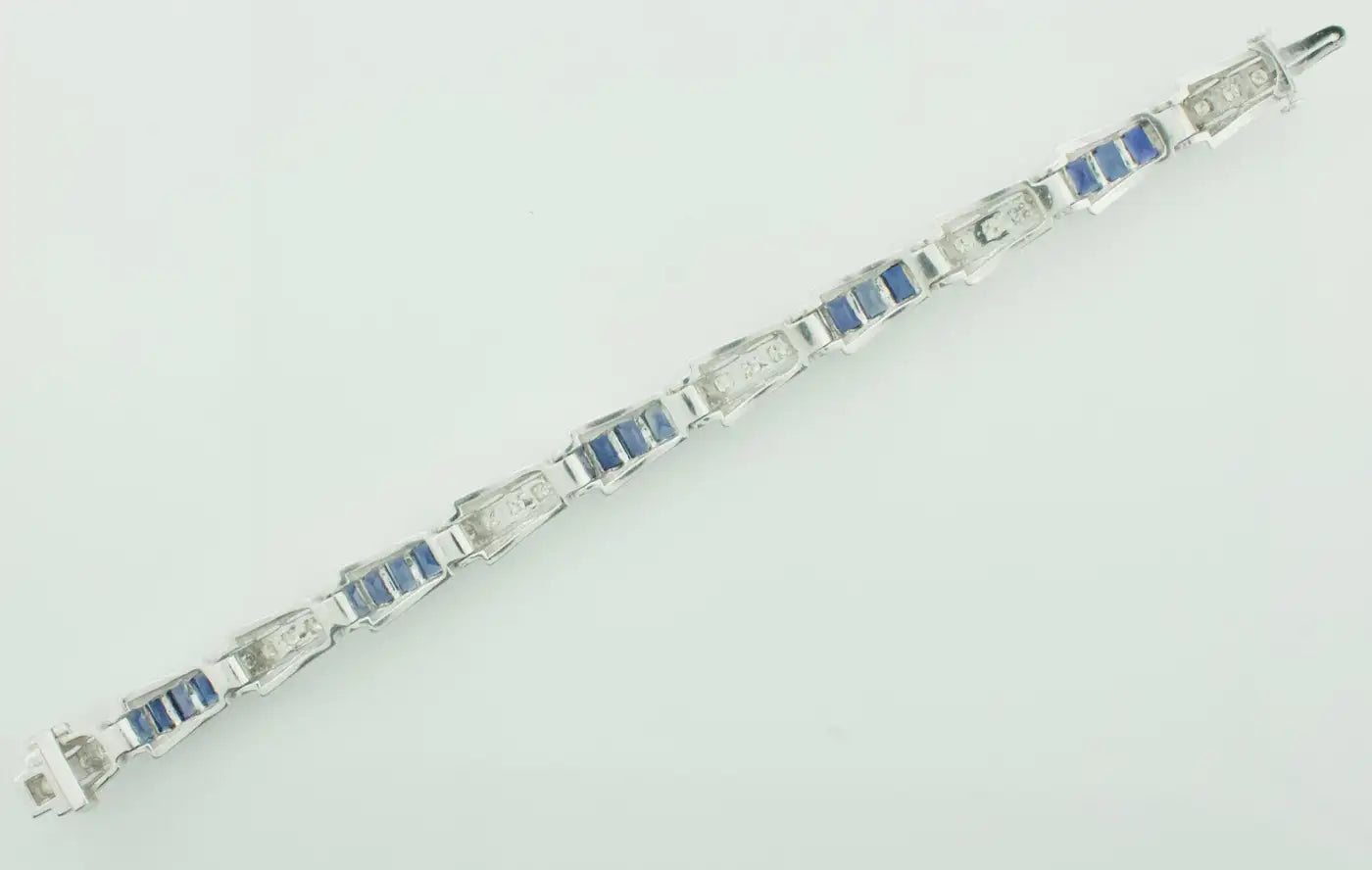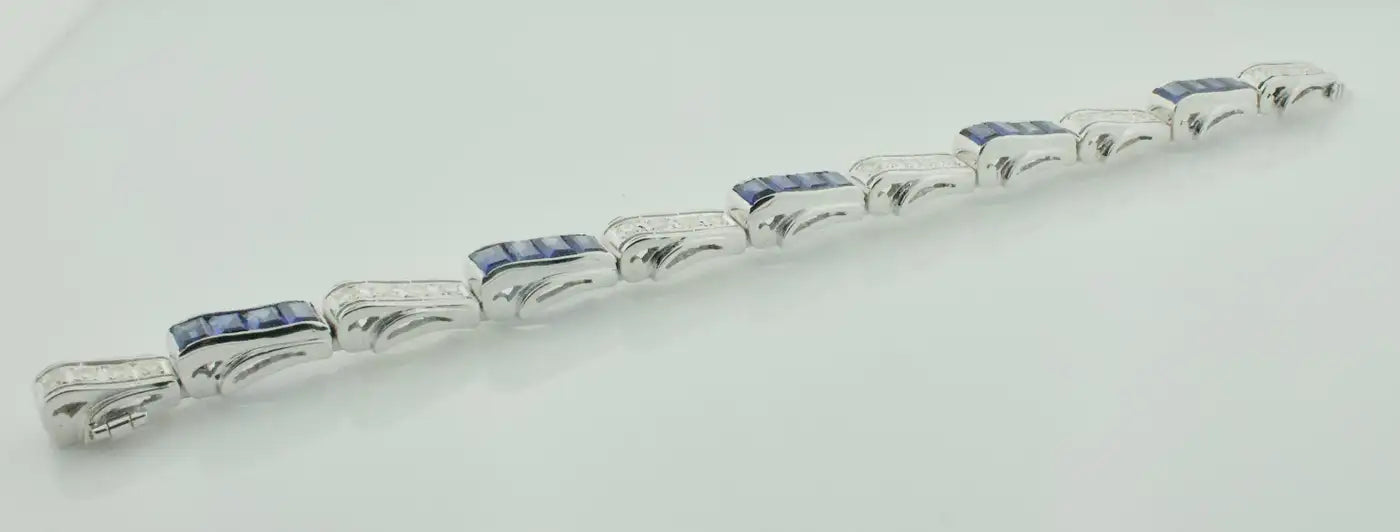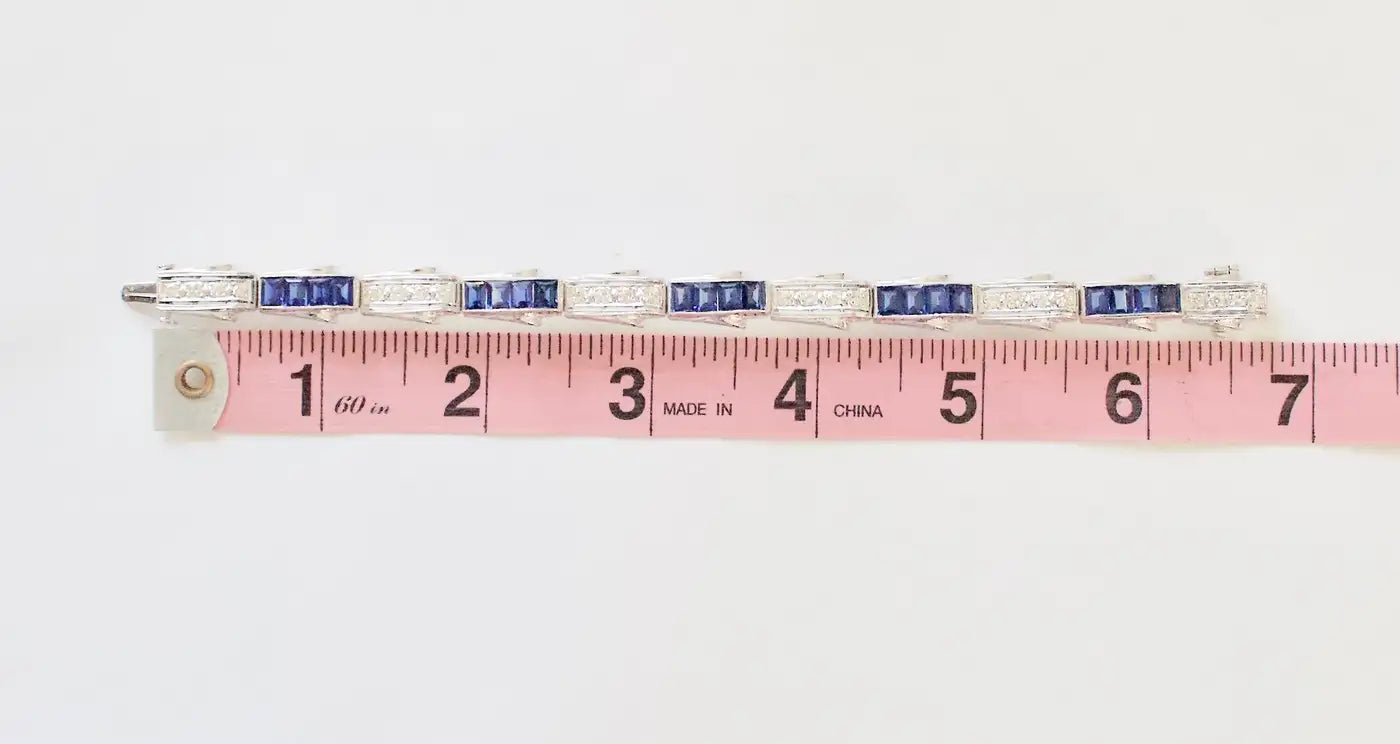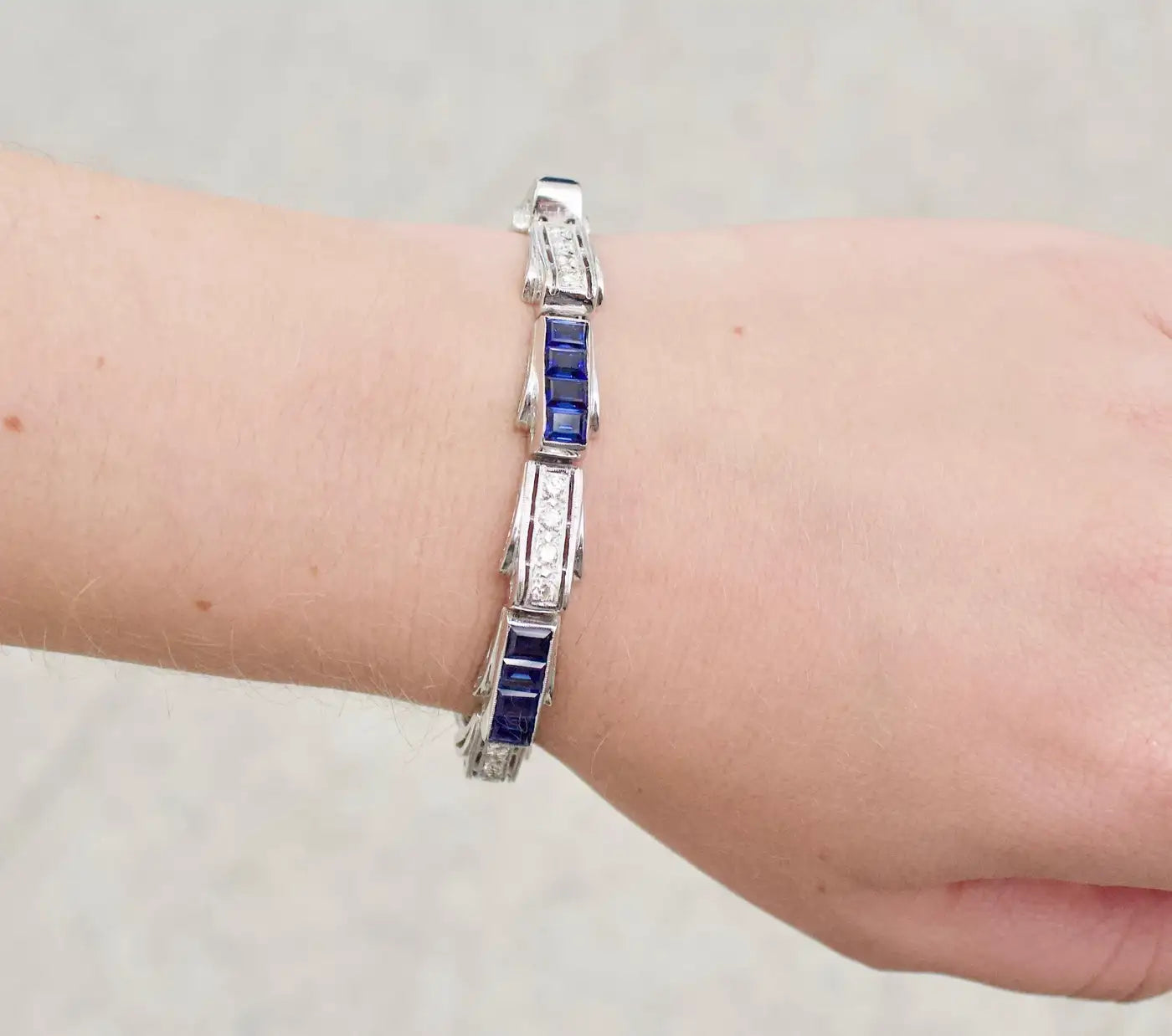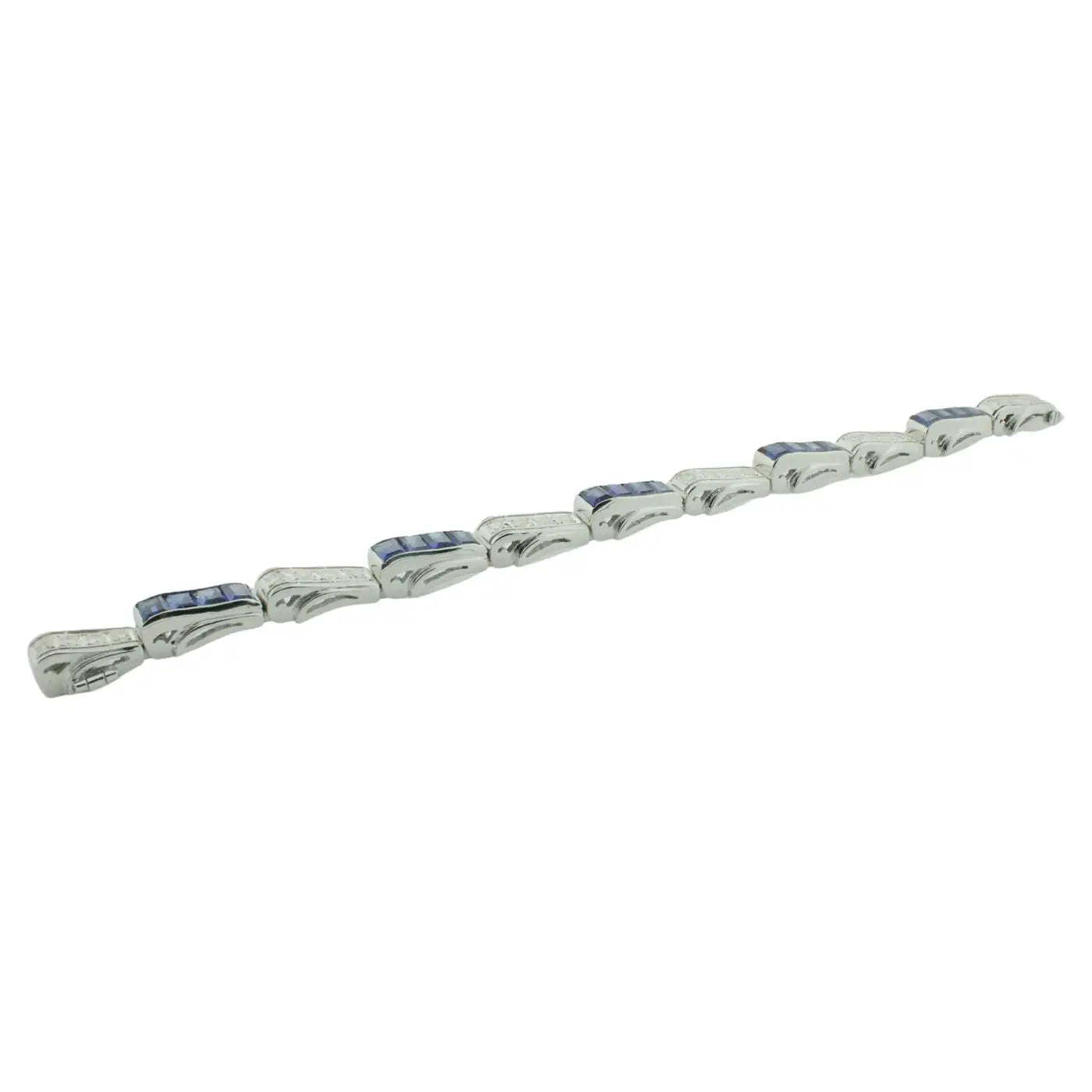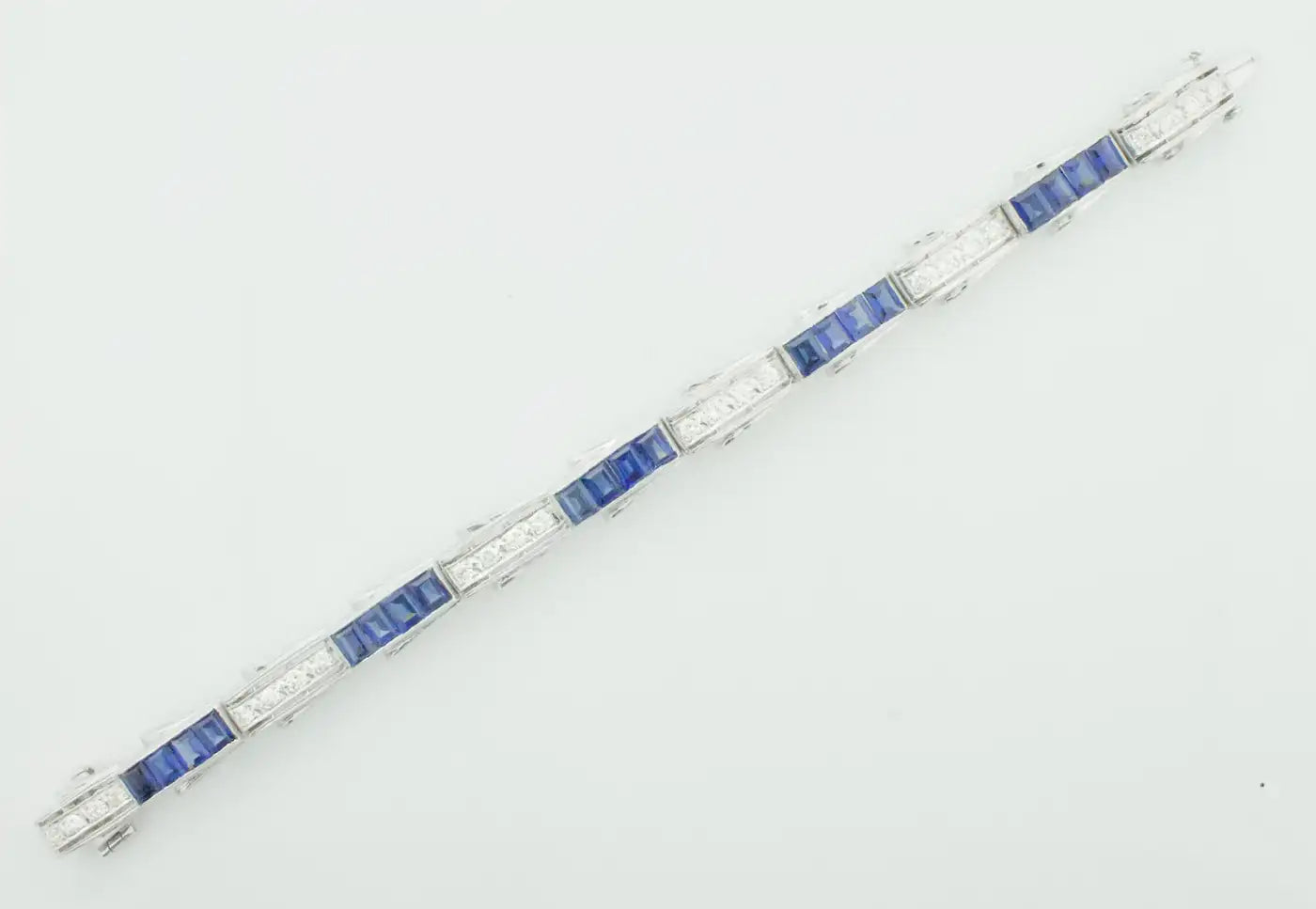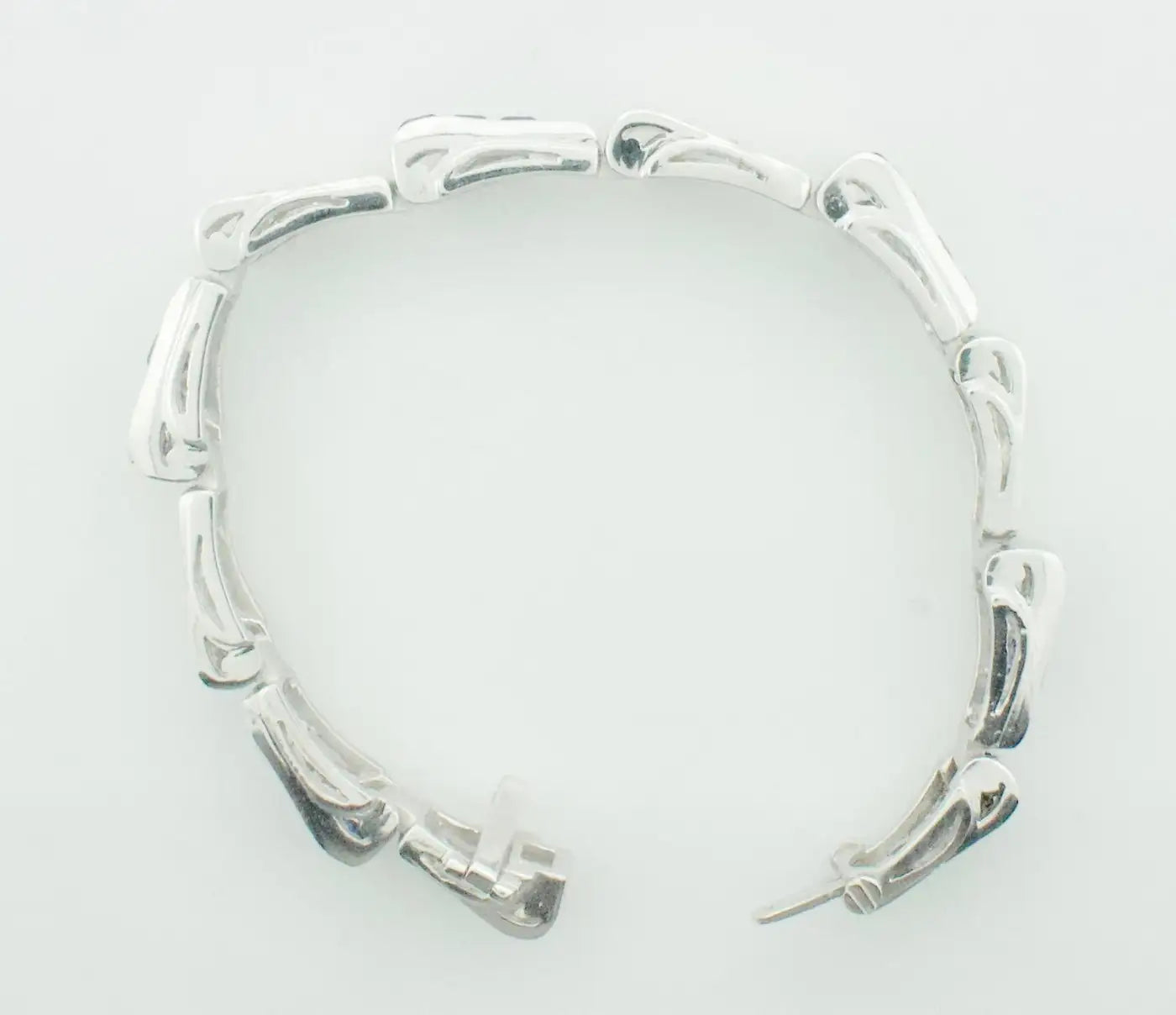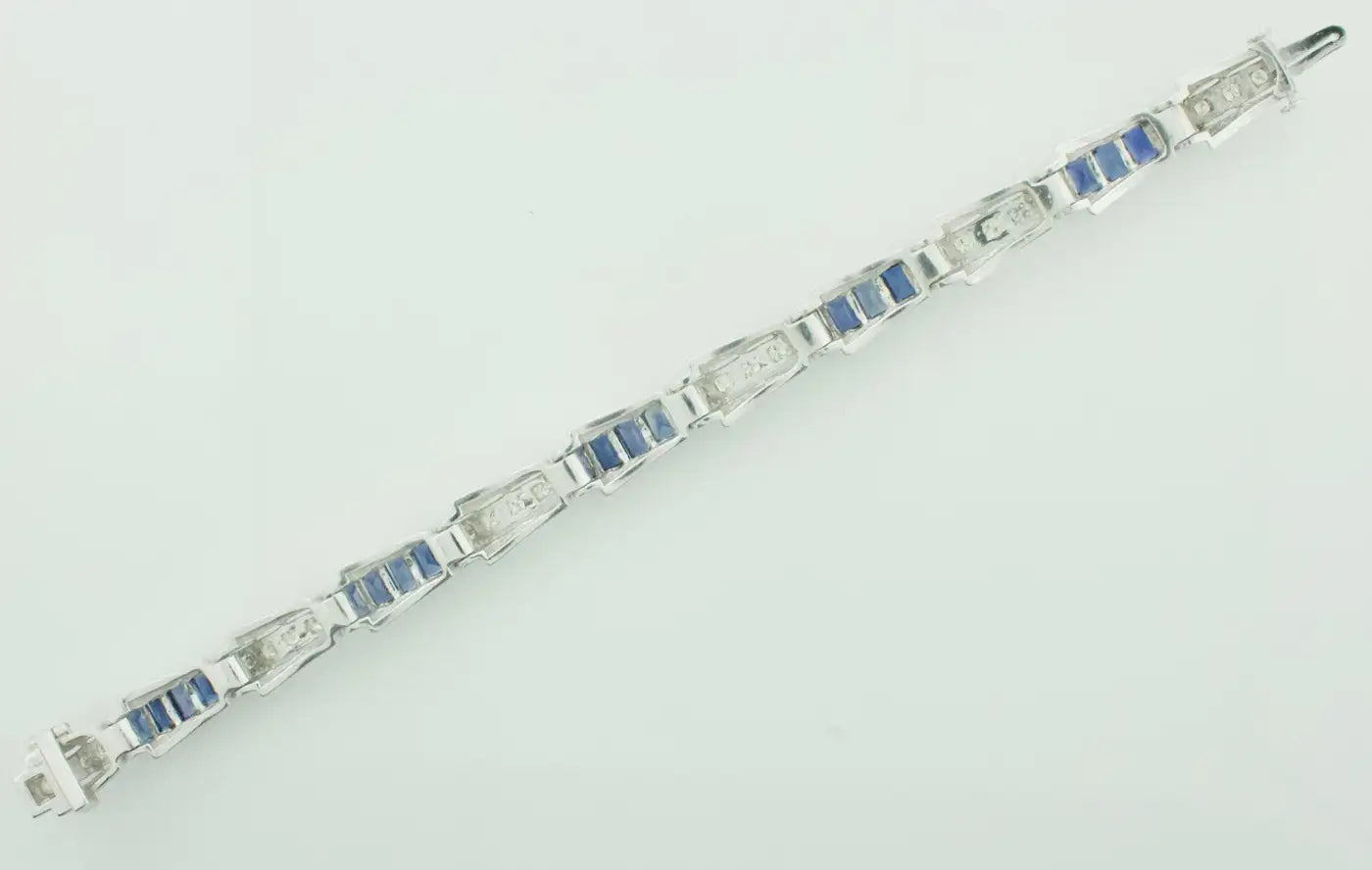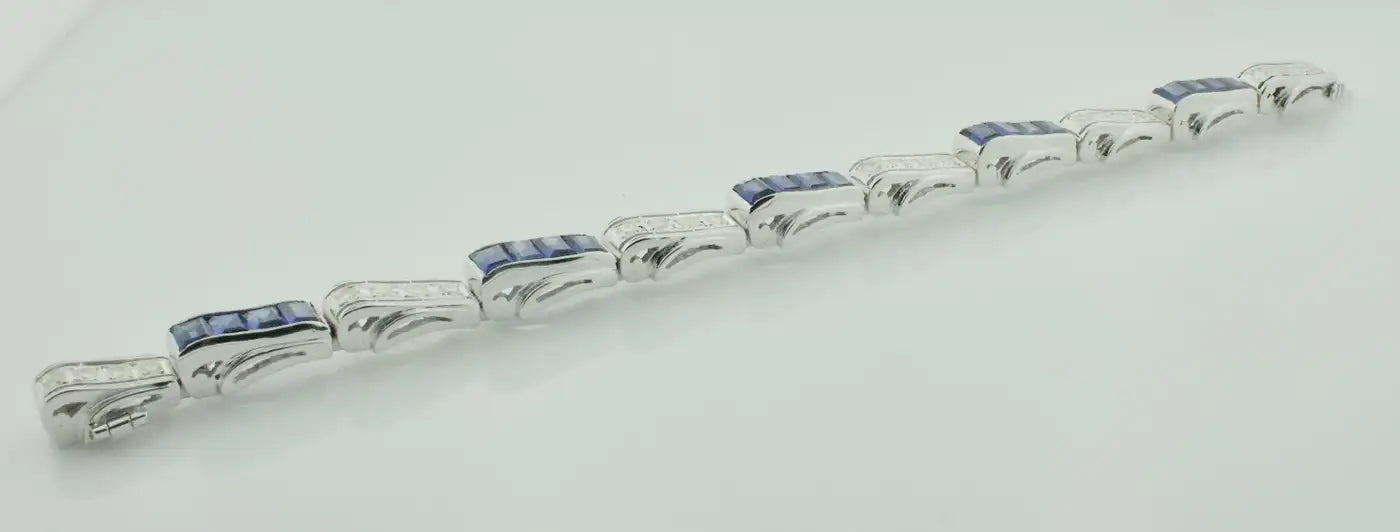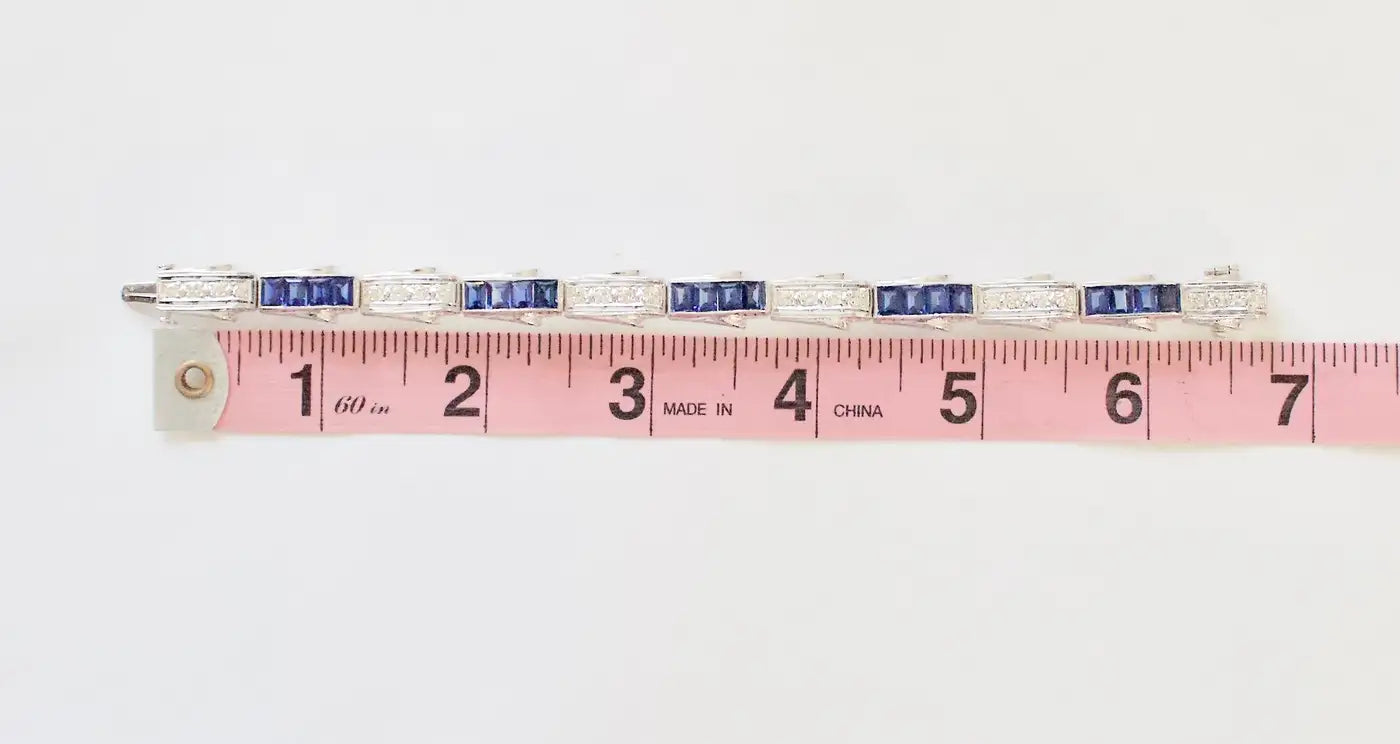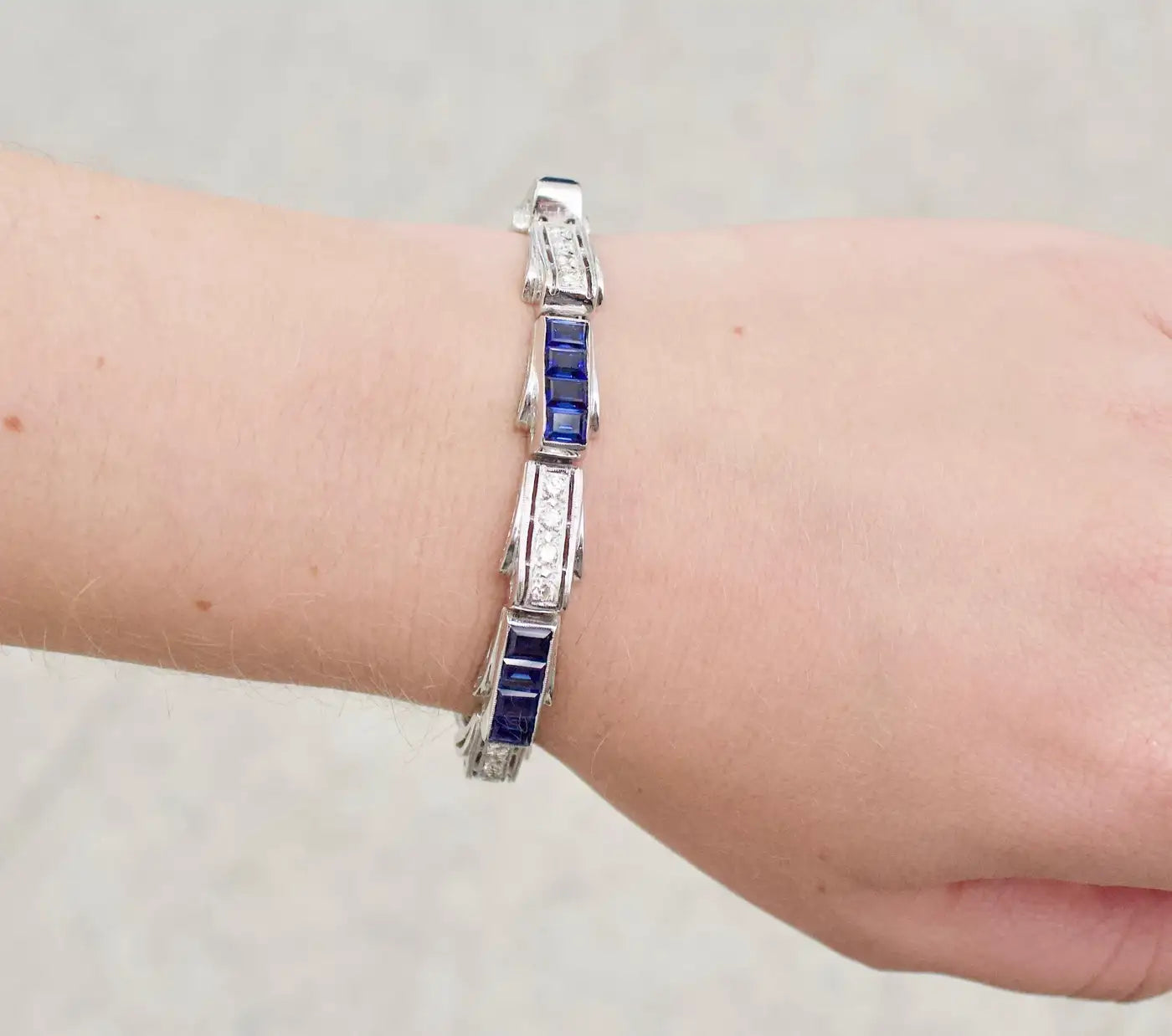Grand Jewels of Wailea
1940's Synthetic Sapphire and Diamond Bracelet
1940's Synthetic Sapphire and Diamond Bracelet
Couldn't load pickup availability
1940's Synthetic Sapphire and Diamond Bracelet 7.00 Carats-Sapphire 1.10 TDW.
Constructed In The Style of a Famous Oscar Heyman Design, This Bracelets Synthetic Sapphires even Fooled a Master Gemologist as Being Natural. They are Synthetic As Was Common Practice of The Era. A Wonderfull Design.
Synthetic sapphires have a long history in the jewelry industry, dating back to the early 1900s. The first synthetic sapphire was created in 1902 by a French chemist named Auguste Verneuil. Verneuil discovered that he could grow crystals in a lab using a process called flame fusion. This involved melting a powdered form of aluminum oxide (the primary component of natural sapphire) and then allowing it to cool and crystallize into a synthetic sapphire.
The first synthetic sapphires produced by Verneuil were used primarily in industrial applications, such as in the manufacture of scientific instruments and watch components. However, it wasn't long before jewelry makers recognized the potential of synthetic sapphires as a more affordable and versatile alternative to natural sapphires.
In the 1920s and 1930s, synthetic sapphires began to be used in jewelry, particularly in mass-produced costume jewelry. Because synthetic sapphires could be made in a variety of colors, including blue, yellow, and pink, they were ideal for creating affordable and colorful jewelry pieces.
During World War II, the use of natural sapphires in jewelry declined due to the disruption of the global supply chain. This further boosted the popularity of synthetic sapphires, as they were more readily available and less expensive than their natural counterparts.
Today, synthetic sapphires are widely used in jewelry and can be found in a range of styles and price points. They are valued for their durability and versatility, and many people choose synthetic sapphires for their engagement rings or other special occasion jewelry. Despite the popularity of synthetic sapphires, natural sapphires remain highly prized and sought after by collectors and enthusiasts.
